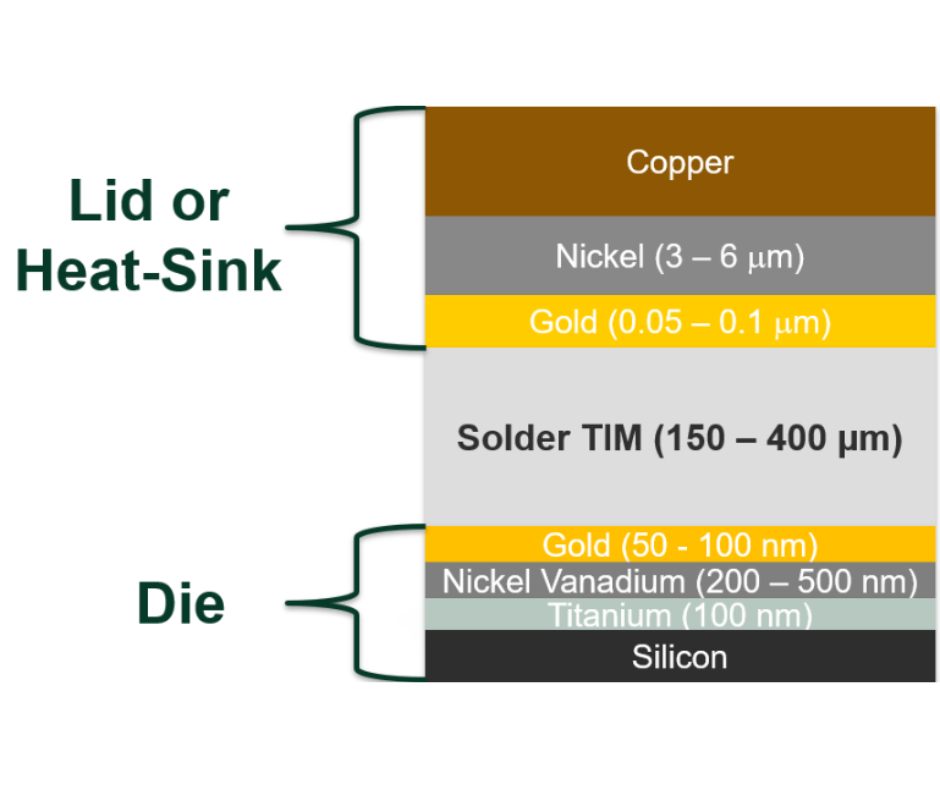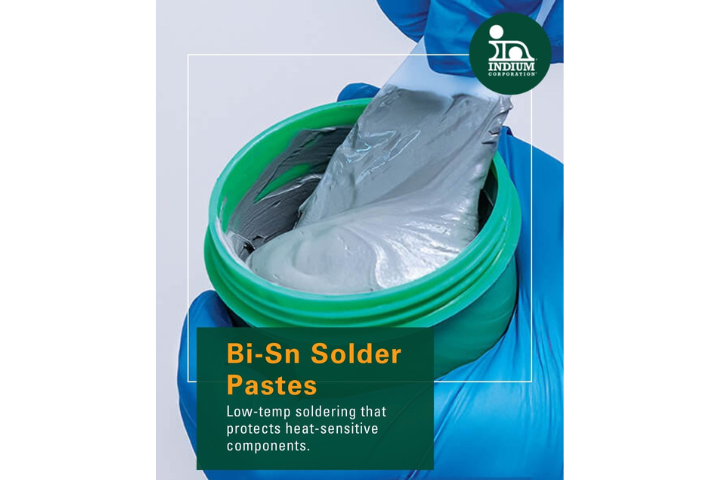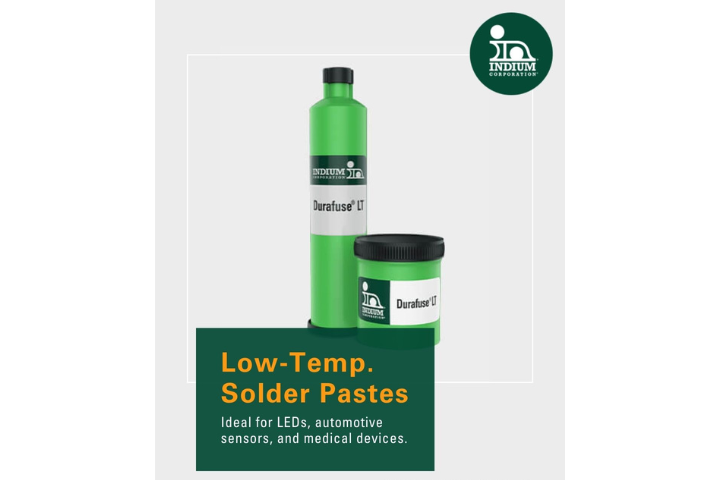If you haven’t heard about Bi-containing (bismuth) solder alloys recently, that may change in the near future. Low-melting Bi-containing solders are now in increasing use and gaining popularity due to their lower melting temperatures—58Bi/42Sn is eutectic at 138°C and 57Bi/42Sn/1Ag melts 137-139°C (both are Pb-free alternatives).
A low-temperature solder is advantageous over higher melting temperature alloys because lower temperature processing requirements can reduce both thermal damage and overall costs. Defects such as delamination or “pop-corning” can be minimized or eliminated by using lower temperature solders. Delamination or pop-corning failure modes occur in moisture sensitive devices (MSDs) when moisture that has diffused into the plastic components expands rapidly upon heating. These lower temperature alloys are also of interest for use with temperature-sensitive components, the step soldering process, or rework.
The base metal for most solders is tin, which melts at 232oC. A number of alloying elements are used to lower the alloy’s melting temperature. Ga, In, Bi, and Cd are effective in reducing the melting temperature of solder alloys. However, Cd is not often considered due to its toxicity. Gallium-containing alloys are not practical as they are typically liquidus at room temperature or slightly above. This leaves bismuth and indium as alloying candidates for a low-temperature tin-based solder alloys. Indium and bismuth both offers unique physical properties.
The BiSnAg alloy has a lower melting temperature than the standard tin-lead solders (Sn63/Pb37 or Sn63eutectic – 183oC), yet it is high enough in many instances to withstand the operational temperature of the finished goods. In addition, its mechanical properties are similar to Sn63, but this solder alloy contains no lead. The alloy is near-eutectic at 137-139°C. Because a reflow temperature of 20-40oC above liquidus is typically recommended, the BiSnAg alloy still only requires a maximum reflow processing temperature of about 180°C. Sn63 assembly generally requires 205-215°C (or higher if reflowing Pb-free BGAs – 225-230°C), and process temperatures of 240-245°C are common for Pb-free assembly.
Work performed by HP (bisnag_strength_and_fatigue___hp.pdf) on shear strength, creep resistance, fatigue resistance, and other mechanical testing shows BiSnAg to have properties approaching or surpassing Sn63 under most conditions, including reasonable strength up to 90°C.
There are some real concerns with bismuth-containing alloys. One of the main concerns is that Bi tends to be fairly brittle and secondly, if used in an application where lead is present, can form a low-melting eutectic at 96°C. The formation of a low-melting eutectic was a major concern when the industry first transitioned into the lead-free arena; most assemblies were only partially lead-free and lead contamination was a real concern. As the transition has progressed, this situation has become much less an issue; today Bi- containing materials are a more viable option.
Most of the focus here has been on the BiSnAg composition because, early on, HP observed that small additions of Ag (or Au) increased the thermal fatigue life of the BiSn eutectic alloy. At -25° to75°C (BiSnAg), all assemblies survived 7,000 thermal cycles, and actually outperformed Sn63. BiSnAg thermal fatigue is comparable or superior to Sn63 (even in the range of 0-100°C and in the absence of Pb contamination). It was suggested by HP that Ag may decrease the grain size and stabilize the microstructure; a finer microstructure is typically ideal for better mechanical properties (bisnag_low_temperature_solder_hp.pdf).
In the next post I will share some of the summary information to consider when using BiSnAg alloy in the SMT process



